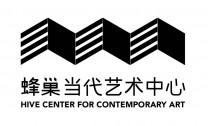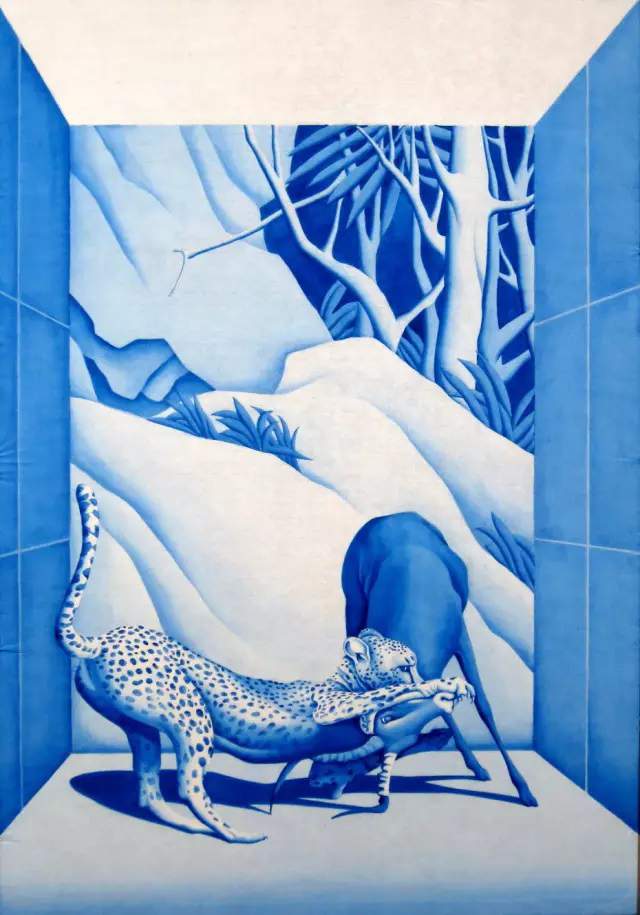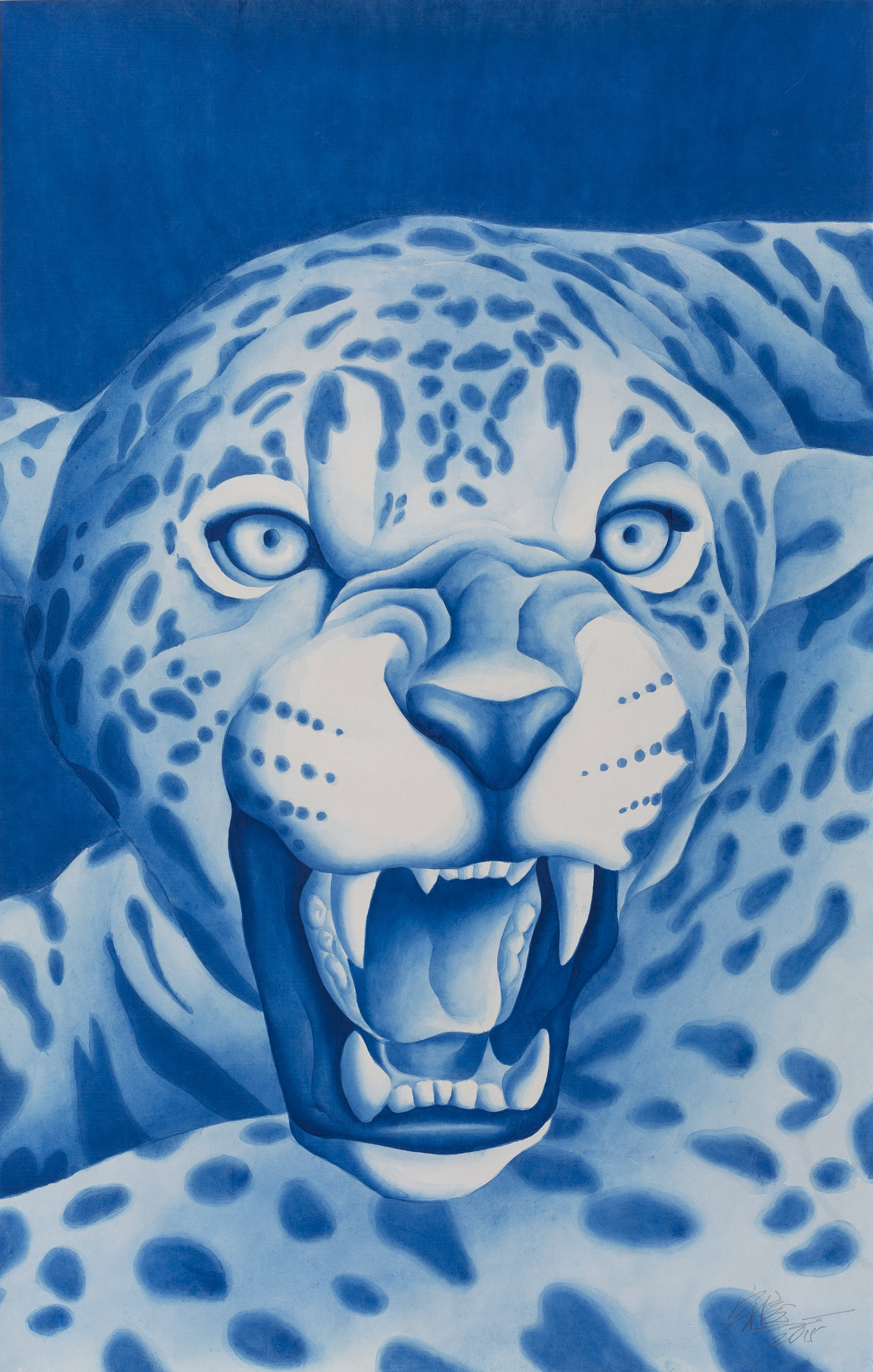- 资质:诚 艺
- 评分:
1分 2分 3分 4分 5分 6分 7分 8分 9分 10分 8.4分
- 印象:
- 经营时间:17年
- 展厅面积:
- 地 区:北京-朝阳
野生动物:宋陵新作展
- 展览时间:2016-09-30 - 2016-11-03
- 展览城市:北京-朝阳
- 展览地点:蜂巢当代艺术中心
- 策 展 人:
- 参展人员:
展览介绍
野生动物:宋陵新作展
Wildlife: Song Ling Solo Exhibition
开幕时间 | Opening:2016.9.30 16:00
展览时间 | Exhibition Dates:9.30.2016 - 11.3.2016
蜂巢当代艺术中心将于2016年9月30日推出“野生动物:宋陵新作展”,是“'85新潮美术运动”中最重要艺术家之一的宋陵2013年自澳洲回归中国并在杭州建立工作室之后最新创作的纸本水墨作品的集中呈现。新作中,宋陵以水墨在纸面建立了虚拟的此在并重置了时空秩序,“野生动物”处于荒诞错位的环境中,宋陵以超现实的手法指涉了被遮蔽的现实世界,并在肯定人与动物具有相关性的前提下探讨既定结构秩序被重构的问题。展览将于蜂巢当代艺术中心B展厅举办,并持续至11月3日。
2014年,宋陵曾在北京今日美术馆举办“重现的镜子”大型展览,这一回顾式的大型展览又于次年巡展至浙江美术馆,以宋陵长达三十年的创作生涯为时间跨度回顾了宋陵早期、在澳洲以及回国并在杭州建立工作室之初的创作。宋陵1961年出生于杭州,1984年毕业于浙江美术学院(现中国美术学院)。时值“'85新潮美术运动”的兴起时期,宋陵以“人·管道”系列作品参加了“'85新空间”展,1986年后,宋陵和张培力、耿建翌等人发起、成立了著名艺术社团“池社”。1986年至1987年间,他继续以独特的水墨形式,创作了一系列题为“无意义的选择?”的组画。在这一系列创作中,宋陵吸收、融合了摄影等表现形式和语言特征,有意对同一个物象(通常是家畜)进行不断复制,这种方式让人想起本雅明对机械复制时代及其艺术作品的批判。1987年以后,“'85新潮美术运动”濒临谢幕,宋陵离开了中国前往澳洲留学并定居。在澳洲,他延续了之前业已形成的个人独特风格,尝试了综合拼贴以及布面丙烯等不同的媒介来创作,并举办了十二回个人作品展;宋陵同时也一直关注中国国内当代艺术生态,2013年他回归中国,并在杭州建立了工作室。宋陵的创作线索是多线并置的,基于对现实社会的理解和文人知识分子化的反思,他归国并开始了个人创作的新阶段。
2013年开始,宋陵创作了“器械”、“夜行者”、“头骨”、“死鸟”等多个系列,及至近两年的“野生动物”,宋陵借助对物象生命热度的抽取,捕捉冷寂的黑暗中所有鲜为人知、日渐销蚀的隐秘。“器械”系列中被肖像画的零件与其他“动物”相关系列中的物象具有形态学的近似性,锋利、脆薄、失温、结构精美。“动物”相关系列中,动物或骨骼被置于画面中央,背景隐略,没有温度、情感、气息,宋陵试图借助它们,提取出关于时间与空间、生命与死亡、易朽与永恒、清晰与模糊等美学问题的思索。
“野生动物”系列中的物象仿佛置身舞台同时又似乎陷于囹圄之中,观众借助宋陵设置的窥探视角延伸至它们背后遥远的原生环境,目光可以轻易跨越囹圄的边界追溯它们的来处,而野生动物却只能被限定在前景的虚拟场域中,画面被冰冷如机械的气氛笼罩,泄露出假想与失真。在一部分作品中,宋陵使用了灰蓝调,最新的大尺幅五联画“野生动物”之“残·食”则转而以零度情感的墨色予以表现,“残·食”表现的境况更为复杂也更戏剧化,墨色的使用为环境设置了冷寂的噪音。
在宋陵创作的早期(上世纪80时代),他也曾以家畜牛羊作为表现对象来表现人类社会的异化;作为宋陵绘画对象的动物总是带有去抒情化、去温度化、冰冷、理性的表征,从而直接导向带有面具感的生命形态,绘画中也一再模糊人与动物、人类社会与动物生境的界分。
宋陵在创作生涯中途经西方文化理念、艺术生态的重塑,历经人类世界转向多媒体信息时代的创辟,在尝试多种媒材的同时,他仍然持续以水墨材质创作,作为其理念以及视觉逻辑叙述的方式。在新的创作中,舞台中央厮杀、怒吼、抑或倒地、失温的野生动物为消费时代物质主义的虚拟空间灌注了噪音与冰冷,在此,也许水墨叙述沉淀出些许温暖,塑造出微妙的失衡而恰到好处。
Hive Center for Contemporary Art is honored to announce the opening ofWildlife: Song LingSolo Exhibition, which will launch at 4:00p.m. on30 Sept. 2016. The exhibition will show Song Ling'snew works of the recent years, from when he came back to organize his respective exhibition in China and establish his studio in Hanghzou from Australia, in 2013. The exhibition will last until Nov. 3, 2016.
In 2014, Ghosts in the Mirror, Song Ling's first retrospective exhibitionwas organized in Today Art Museum(Beijing), with its full success, the exhibition, comprised roughly 200 artworks and large amounts of documentary materials spanning three decades’ artistic career of Song Ling,had the second show in Zhejiang Museum(Hangzhou).Song Ling was born in Hangzhou in 1961, and graduated from Zhejiang Academy of Art in 1984. His series People-Pipelines was featured in ’85 New Space, one of the most important exhibitions of the ’85 New Wave art movement. These works used Surrealist techniques to prophet the human contradictions of the era of industrialization. In 1986, he joined Zhang Peili, GengJianyi and others to found the Pond Association. At the same time, Song Ling also reached a high point in his individual creations. Between 1986 and 1987, he created a series of ink paintings entitled Meaningless Choice? In this series, Song Ling absorbed and incorporated the expressive forms and linguistic traits of photography to create numerous reproductions of the same image (mostly livestock). This approach calls to mind Walter Benjamin’s critique on the work of art in the age of mechanical reproduction. The artist’s depictions of these animals can also be seen as depictions of people: in the era of industrial technology and mechanical cultivation, man and livestock share the same fate.After 1987, as the tumultuous ’85 New Wave art movement was approaching its close, Song Ling left China to study and live in Australia. Once in Australia, he continued with his already-formed unique individual style. Aside from ink painting, he also experimented with mixed-media collage, acrylic and other mediums, 12 solo exhibitions had been organized. During his residence in Australia, Song has concerns about Chinese contemporary scene as always, and he returned to Hangzhou to set up a studio in 2013.
Song Ling’s works since 2013 include series like “The Instrument”, “Nightwalker”, “Scull”, “Dead Bird” and the “Wildlife” series in the past two years; by extracting the vital heat of every object, Song Ling captures all the rare, vanishing secrets in the cold and lonesome darkness. The portrayed parts in the “The Instrument” series are similar morphologically to the images in other “animal”-related series, both being sharp, thinly brittle, de-thermalized, and delicate in structure. In his “animal”-related series, the animal or the skeleton is placed in the center of the picture, with a faded background, without warmth, feelings or breaths, through which Song Ling tries to elicit thoughts on aesthetic issues about time and space, life and death, evanescence and eternity, clarity and obscurity, etc.
In the “Wildlife” series, the depicted objects appear to be put on a stage as well as in a trap. Viewers go beyond the peeping angle set by Song Ling to the far-away original environment behind them. It’s easy for eyes to trace their roots out of the trap, but the wild animals can only be limited in the virtual field of the foreground, and the picture is filled with a mood cold as machinery, betraying imagination and distortion. Some of Song’s works take on the tone of grey and blue, while “Cruel/Devour” in “Wildlife”, his latest large quintuplet, turns out to be depicted in the color of ink which is devoid of feelings; the scenario of “Cruel/Devour” is more complicated and dramatic, and the color of ink is employed to give a cold and lonesome noise to the environment.
In the “Wildlife” series, the depicted objects appear to be put on a stage as well as in a trap. Viewers go beyond the peeping angle set by Song Ling to the far-away original environment behind them. It’s easy for eyes to trace their roots out of the trap, but the wild animals can only be limited in the virtual field of the foreground, and the picture is filled with a mood cold as machinery, betraying imagination and distortion. Some of Song’s works take on the tone of grey and blue, while “Cruel/Devour” in “Wildlife”, his latest large quintuplet, turns out to be depicted in the color of ink which is devoid of feelings; the scenario of “Cruel/Devour” is more complicated and dramatic, and the color of ink is employed to give a cold and lonesome noise to the environment.
Over the past few decades, Song’s art has witnessed the Western cultural ideas and art ecology being reshaped and the innovative turn of the human world into an age of multimedia information, and in his experimentation on many other mediums, he has never put aside ink and wash, the narrative manner of his ideas and visual logic. In his new creations, the wild animals, fighting at close quarters, roaring with anger, or tripped over, de-thermalized at the center of the stage, fill the virtual space of materialism in this consumer age with noise and coldness; in this way, the narration in ink and wash may have helped settle some warmth and created an imbalance of perfect subtlety.

 黄琦
黄琦 测试用艺术
测试用艺术











